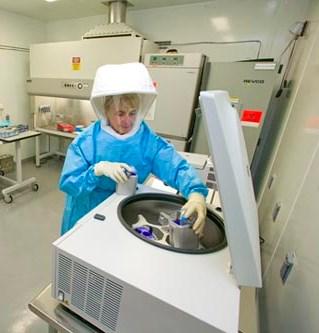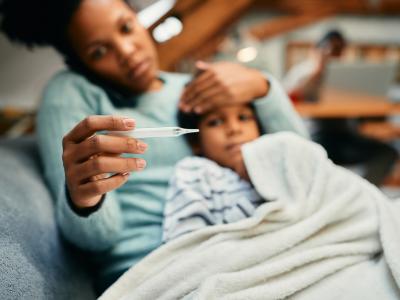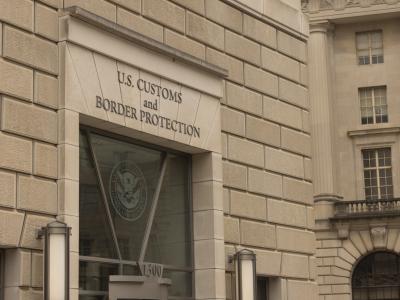The US Centers for Disease Control and Prevention (CDC) yesterday unveiled a proposal to add certain H5N1 influenza viruses to the Department of Health and Human Services (HHS) select agent list and to designate ones that are modified to be more transmissible in mammals to the category that poses the greatest risk to humans.
Federal officials have been weighing adding the viruses as select agents in the wake of lab biosafety concerns involving the publication of studies on lab-modified H5N1 strains that were capable of airborne transmission in ferrets, which triggered a debate about dual-use research of concern (DURC) that began in early 2012.
The CDC detailed the proposal yesterday in a Federal Register notice and asked the public for comments, which are due by Sep 14. Experts contacted by CIDRAP News voiced mixed reactions to the proposal.
Also, a Dutch court has handed down a decision to Dutch H5N1 researchers that adds to uncertainties over whether they need government clearance to publish DURC research.
Proposal background
The CDC's proposal is based on a recommendation from the federal Intragovernmental Select Agents and Toxins Technical Advisory Committee (ISATTAC). HHS also sought feedback from the public in October 2012 about the risks posed by H5N1 viruses and if they should be designated as HHS select agents.
Such a designation would require labs working with the virus to register with HHS and meet specific rules for lab security, personnel screening, and lab worker training.
Highly pathogenic H5N1 viruses are already included on the US Department of Agriculture's (USDA's) select agent list, which means that labs must register with and meet requirements set by the USDA's Animal and Plant Health Inspection Service (APHIS). Federal officials have said that including them on the HHS select agent list would ensure that the rules are designed to limit the threat of the viruses not just to animals but to human health, as well.
Transmissible strains to highest tier
HHS's 2012 request for input sought feedback not only on adding H5N1 to its select agent list, but also on whether it should be listed as a Tier 1 agent, a new category that requires added precautions.
The CDC's proposal applies to viruses that contain the hemagglutinin (HA) from the first highly pathogenic H5N1 virus that was identified in humans, the goose/Guangdong/1/96 lineage, including wild-type ones. So far all H5N1 HA clades found in humans descended from that lineage. Viruses that are modified in the lab to be more transmissible by respiratory droplets among mammals would likewise be added to the Tier 1 list.
In yesterday's notice, federal officials said they received 31 comments from academic, private, commercial, and professional groups, and 27 asserted that the viruses pose a severe threat to public health and warrant inclusion as HHS select agents. Twenty of them said in general the H5N1 viruses shouldn't be designated as Tier 1 agents, because biosecurity measures are already in place to protect against an accidental release. The CDC, however, said the same group viewed the transmissible strains as a unique threat that warrants Tier 1 inclusion.
When asked about special precautions regarding diagnostic specimens, commentators' varied recommendations ranged from limiting the work to biosafety level 3 (BSL-3) to enhanced BSL-2 facilities.
Regarding conditions for work with transmissible H5N1 strains, some commenters recommended BSL-4 containment—the highest level—while others recommended that work with suspected transmissible strains be done in enhanced BSL-3 or, when possible, BSL-4 conditions.
Federal officials said new policy would also close an oversight gap regarding low-pathogenicity H5N1, which currently isn't classified as a select agent, though it can cause severe disease in humans.
They recognized that the new rules could hinder the development of vaccines during an influenza outbreak and asked for input on how to accommodate that process while protecting the public against the accidental or intentional release of H5N1 viruses. For example, the CDC said it seeks criteria that would exclude vaccine reassortants.
Experts weigh in
Marc Lipsitch, PhD, director of the Center for Communicable Disease Dynamics at the Harvard School of Public Health, said he was pleased to see that the proposal would designate as Tier 1 select agents H5N1 viruses that are transmissible by respiratory droplets in the lab. In the gain-of-function debate over the past few years, Lipsitch has raised concerns about the risks of the experiments and proposed alternative approaches for making the work safer.
He said he was also pleased to see that federal officials consider experiments with the viruses a significant public health concern.
Michael Imperiale, PhD, of the University of Michigan Medical School, told CIDRAP News that the details in the proposal weren't surprising. He has taken a cautious stance about the research and has pushed for the opposing sides to continue their discussion to reach common ground.
He said the H5N1 select agent action would limit the amount of work that is done with H5N1 in the United States, or with US funding, because it could only be done at registered facilities by registered scientists. Imperiale added that it will be interesting to see how federal officials apply the new rules to vaccine research.
Paul Duprex, PhD, associate professor of microbiology at Boston University and part of a group that asserts that the work can be done safely and is needed for fully understanding infectious diseases, said that, under the proposed rules, not all scientists working with the virus will have access to a facility allowed for work with the pathogens or the required training.
He said the regulations would put some researchers in a tough spot, especially those who are working on an existing project in a setting where, according to the new rules, it couldn't be performed.
Select agent changes for some scientists have them facing "continually moving goalposts," Duprex said. "I'm confident that this will yet again have an impact on the productivity and morale of the US influenza community," he added.
Dutch decision leaves legal tangle
In another DURC development, a Dutch appeals court recently tossed out an appeal of a lower court's decision in 2013 that said Ron Fouchier, PhD, a researcher at Erasmus Medical Center in Rotterdam who led one of the controversial H5N1 gain-of-function studies, needed a government license to publish the findings, ScienceInsider reported yesterday.
In turning back the earlier decision, however, the court muddied Fouchier's legal position even further, because it ruled that he and his employer didn't have the standing to take legal action against the Dutch government, according to the report. The court handed down its decision on Jun 18, but didn't publish its verdict until Jul 15.
Fouchier told ScienceInsider that he was disappointed and said it appeared that the court didn't want to tackle the difficult issue and passed on it instead.
See also:
Jul 16 Federal Register notice
Oct 18, 2012, CIDRAP News story "HHS seeks comments on risks of H5N1 research"
Jul 16 ScienceInsider story























